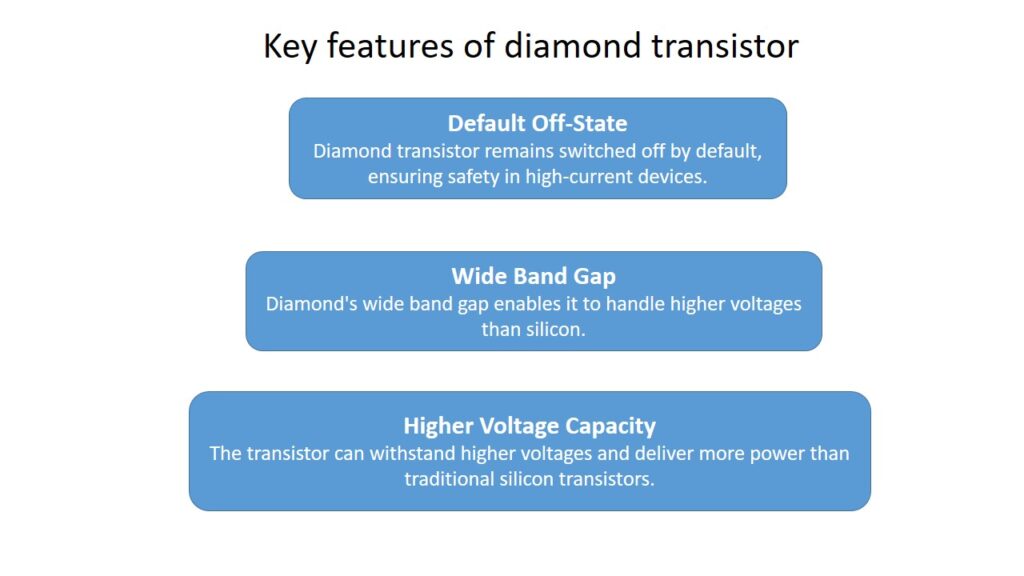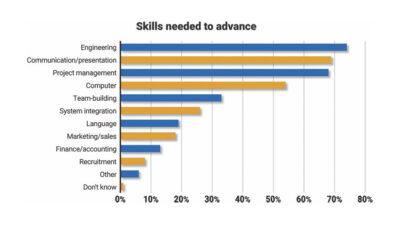The new transistor design could be beneficial for sectors like power grids and electric vehicles.
Researchers at the University of Glasgow have developed a new generation of diamond-based transistors for use in high-power electronics.
Their new diamond transistor addresses previous limitations in the technology, bringing the device closer to practical applications across industries that utilize high power systems.

The team has developed a method to use diamond as the basis of a transistor that remains switched off by default – a development important for ensuring safety in devices that carry a large amount of electrical current when switched on.
Diamond has a natural characteristic known as a wide band gap, meaning it can handle higher voltages than silicon – the material the majority of transistors are made from – before electrically breaking down. In power electronic applications, that means that transistors made from materials such as diamond can withstand higher voltages and deliver more power than Si transistors.
The team’s diamond transistor has potential uses in sectors where high voltages are required and efficiency is important, like power grids or electric vehicles.
Professor David Moran, of the University of Glasgow’s James Watt School of Engineering, directed the research team with partners from RMIT University in Australia and Princeton University in the USA. Their research is published as a paper in the journal Advanced Electronic Materials.
Prof Moran said: “Transistors are essentially switches that control electrical current. Devices like computers or smartphones use billions of tiny silicon-based transistors which draw small amounts of power, but power electronics use much fewer switches at significantly higher power levels.
“The challenge for power electronics is that the design of the switch needs to be capable of staying firmly switched off when it’s not in use to ensure it meets safety standards, but it must also deliver very high power when turned on.
“Previous state-of the-art diamond transistors have generally been good at one at the expense of the other – switches which were good at staying off but not so good at providing current on demand, or vice-versa. What we’ve been able to do is engineer a diamond transistor which is good at both, which is a significant development.”
At the University of Glasgow’s James Watt Nanofabrication Centre, the team used surface chemistry techniques to enhance the efficiency of diamond, coating it in hydrogen atoms followed by layers of aluminium oxide.
Their diamond transistor needs six volts to activate, more than twice the voltage compared to previous diamond transistors, while continuing to provide high current when activated.
They also increased charge moves efficiency, showing twice the performance compared to traditional diamond transistors. In practical terms, this allows electrical charge to pass with less resistance, enhancing overall efficiency.
When switched off, the device’s resistance is high enough to be undetectable by the team’s lab equipment, ensuring minimal current loss when it’s supposed to be off, a vital safety feature for high-power applications.
Prof Moran added: “These are really encouraging results, which bring diamond transistors much closer to achieving their potential than ever before. The production cost for diamond is surprisingly low for a material that many people associate with luxury goods, but there are still challenges to be addressed before diamond transistors are ready to be scaled up by the manufacturing industry. We hope that our research will help drive forward the adoption of diamond transistors across industries in the years to come.”
The team’s paper, titled ‘Extreme Enhancement-Mode Operation Accumulation Channel Hydrogen-Terminated Diamond FETs with Vth <−6V and High on-Current’, is published in Advanced Electronic Materials.
Edited by Puja Mitra, WTWH Media, for Control Engineering, from a University of Glasgow news release.



